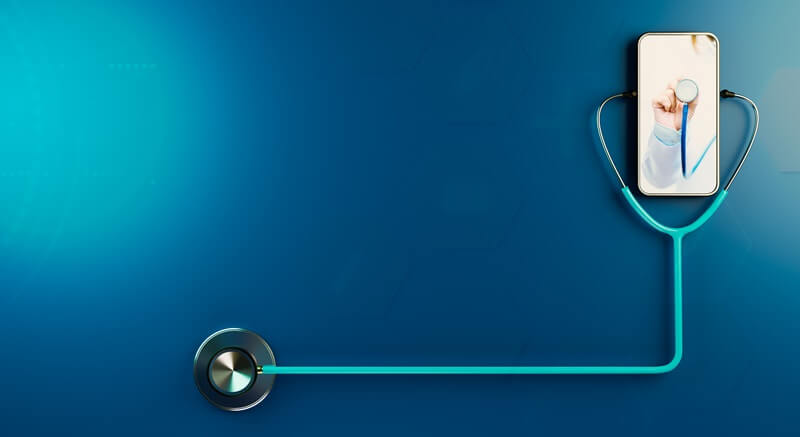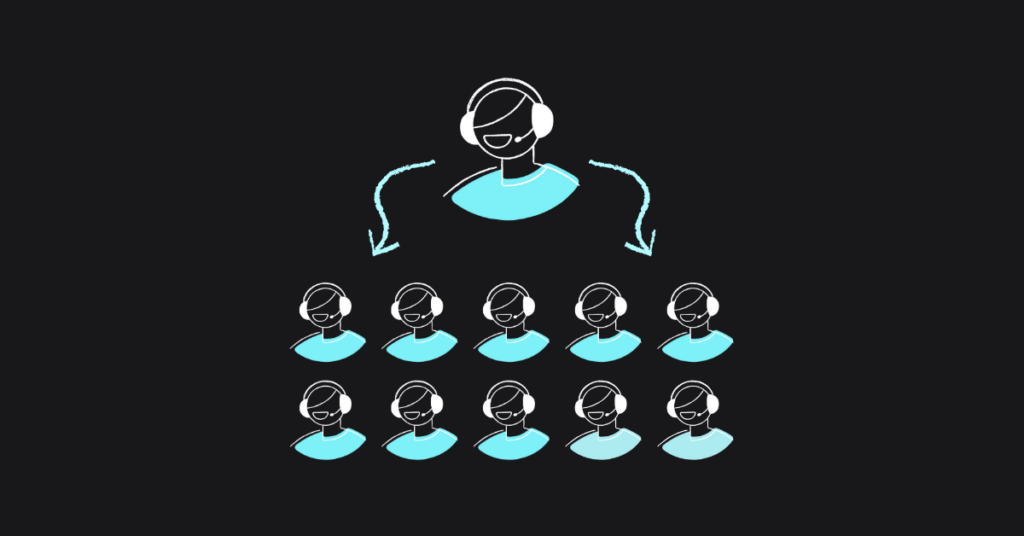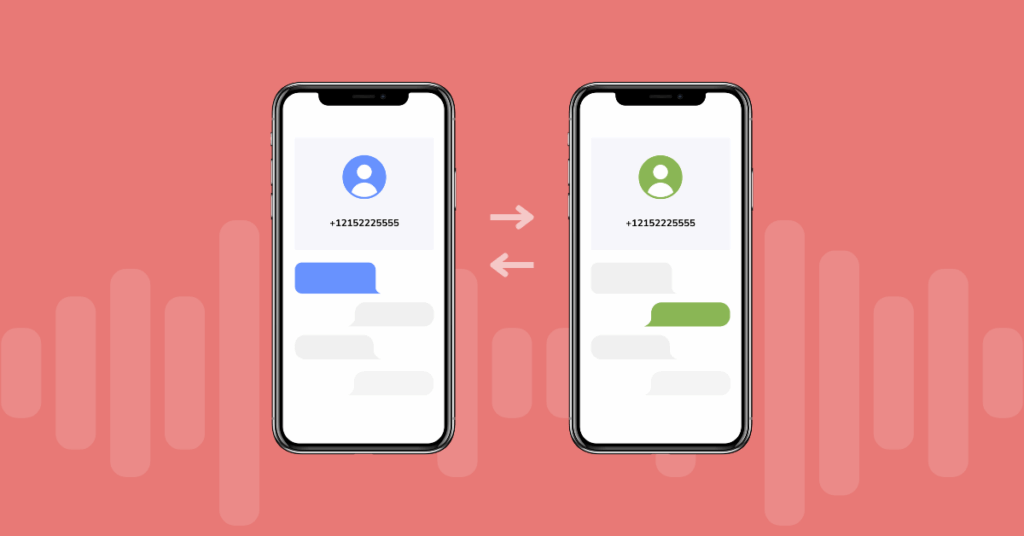
Table of contents
Today, where technology is advancing by leaps and bounds, it is essential for the healthcare sector to adopt innovative solutions to improve the efficiency and quality of patient care.
One of these solutions is the incorporation of VoIP into the telephone management of healthcare industry.
A technology that allows telephone calls to be made over the Internet instead of traditional telephone lines.
What is VoIP?
VoIP, or Voice over Internet Protocol converts voice signals into digital data that can be transmitted over the Internet.
It allows users to make telephone calls using a high-speed Internet connection rather than a conventional telephone line.
VoIP systems can be integrated with various devices, such as computers, IP phones, and mobile applications, offering unprecedented flexibility.
Relevance of VoIP in the healthcare industry
Effective and efficient communication is critical to providing quality care in the healthcare industry.
VoIP stands out as a powerful tool that can transform how healthcare professionals communicate with each other and their patients.
By adopting VoIP, healthcare facilities can gain several benefits that improve both internal operations and the patient experience.
Benefits of VoIP for the healthcare industry
Adopting VoIP in the healthcare industry offers multiple benefits that can significantly transform the operations of hospitals, clinics, and other healthcare centers.
These benefits are detailed below, with practical examples and comparisons with traditional telephone systems.
Cost reduction
One of the most prominent benefits of VoIP is the significant cost reduction compared to traditional telephone systems.
– Elimination of long-distance costs: International and long-distance calls, which are often expensive with traditional systems, are much cheaper with VoIP.
- For example, a hospital that needs to communicate frequently with overseas medical equipment suppliers can reduce its phone bills considerably.
– Reduced infrastructure: VoIP eliminates the need to maintain a complex and costly telephone infrastructure. There is no need to install and maintain physical phone lines. Calls are made over the existing data network.
- A multi-branch health center can use the same data network for all communications, significantly reducing maintenance costs.
– Cost-effective scalability: Adding new lines or extensions to a VoIP system is much cheaper and more straightforward than traditional systems.
- For example, a clinic expanding its services can add new telephone lines without significantly additional costs.
Improved call quality
Call quality is crucial in the healthcare industry. Clear and accurate communication can be a critical issue for care.
– Clarity and stability: VoIP offers superior call quality with fewer interruptions and distortions.
- For example, in a telephone consultation between a doctor and a patient, the clarity of the call ensures that medical information is transmitted accurately, reducing the risk of errors.
– Background noise reduction: VoIP systems can include noise and echo cancellation technologies, improving call quality.
- It is instrumental in noisy environments, such as emergency rooms.
Flexibility and mobility
VoIP provides flexibility and mobility that traditional phone systems cannot match.
– Access from anywhere: Healthcare professionals can access the phone system from anywhere with an Internet connection. It allows doctors and nurses to be available even when away from the hospital premises.
- For example, a doctor on call can take urgent calls from home without any problems.
– Multi-device use: VoIP can be used on various devices, including IP phones, computers, and cell phones.
- A doctor can receive calls on his cell phone while moving between different parts of the hospital, ensuring that he never misses an important call.
Integration with other systems
The ability to integrate VoIP with other systems used in the healthcare industry is another significant benefit.
– Compatibility with hospital management systems: VoIP can be integrated with hospital management systems (HMS) and electronic medical records (EMR). This allows patient information to be available during calls, improving communication efficiency and accuracy.
- For example, when receiving a call from a patient, the system can automatically display the patient’s medical history. It facilitates more personalized and effective care.
– Process automation: VoIP systems can automate tasks such as scheduling appointments and sending reminders to patients.
- A clinic can configure its system to send automated text messages or emails that remind patients of upcoming appointments. It reduces the number of missed appointments.
– Data monitoring and analysis: Integration with analytics systems allows healthcare facilities to monitor and analyze phone calls, identifying patterns and areas for improvement.
- For example, a hospital can analyze the volume of calls received at different times of the day to optimize staffing and improve patient care.
Expert advice
Before implementing VoIP, it is crucial to conduct a thorough assessment of your facility’s specific needs. It includes analyzing call volume, the need for video conferencing, and integration with existing systems such as electronic medical records (EMR). Remember to involve all departments in this assessment to ensure that all needs are adequately addressed.
Improving patient care with VoIP
Implementing VoIP in healthcare not only improves efficiency but also reduces costs. It also transforms the way patient care is delivered.
These benefits make VoIP an indispensable tool for any modern healthcare institution seeking to optimize its services and improve patient outcomes.
Accessibility and immediate response
One of the main benefits of VoIP in the healthcare sector is improved accessibility and immediate responsiveness.
VoIP facilitates direct and rapid contact between patients and healthcare professionals. It allows patients to get the care they need without delay.
- For example, a VoIP system allows patients to call their doctor or a medical attention line directly and be transferred quickly to the appropriate department without waiting on hold for long periods. This immediate accessibility can be crucial in emergencies where every second counts.
Telemedicine support
VoIP is an essential tool for telemedicine support, enabling video calls and remote consultations with ease.
Video calls via VoIP enable doctors to conduct real-time consultations with patients in remote locations, reducing the need for travel and making medical care more accessible.
- For example, the Kaiser Permanente health system uses VoIP to facilitate remote consultations, allowing patients to connect with specialists without the need to visit a clinic physically. It saves time and resources and reduces the risk of exposure to communicable diseases.
Appointment management and reminders
VoIP also improves appointment and reminder management, automating these processes for greater efficiency.
VoIP systems can send automatic reminders to patients via calls, text messages, or emails. It helps reduce missed appointments and ensures patients remember their medical appointments.
- For example, a clinic that implements a VoIP system can see a noticeable decrease in missed appointments thanks to automated reminders. It improves operational efficiency and utilization of medical staff time.
Personalized care
VoIP enables a higher level of personalized care by allowing users to record and access call histories and patient data.
Every interaction with the patient can be recorded. This allows healthcare professionals to review past conversations and gain a more complete understanding of the patient’s medical history prior to any consultation, facilitating more personalized and effective care.
- For example, in a hospital, VoIP allows doctors to quickly access call histories and patient data, improving diagnostic accuracy and patient satisfaction.
Implementation of VoIP in health centers
The implementation of VoIP in healthcare facilities must be carefully planned. From needs assessment to staff training, each step must be executed thoroughly to ensure a smooth and effective transition.
With proper planning and selection of the right vendor, healthcare facilities can fully take advantage of VoIP technology’s benefits.
Needs assessment
The first step in implementing VoIP in a healthcare facility is to assess the facility’s specific needs thoroughly. It involves analyzing current and future communication requirements, including:
- call volume
- the need for video conferencing
- integration with existing systems (such as electronic medical records)
- security and privacy needs
For example, a large hospital may need a robust VoIP infrastructure that supports thousands of calls per day and integrates seamlessly with its hospital management systems.
VoIP provider selection
Choosing the right VoIP provider is crucial to a successful implementation. There are several factors to consider when selecting a provider:
- Cost: It is essential to evaluate initial installation and recurring operating expenses. Some providers offer subscription-based pricing models that may be more economical in the long run.
- Technical support: Good technical support is essential to resolve problems quickly and minimize downtime. Check available support options, such as 24/7 assistance and guaranteed response times.
- Features: Make sure the vendor offers the features needed for your facility, such as video calling, integration with patient management systems, call recording, and advanced security features.
- Reputation and references: Research the vendor’s reputation and ask for references from other healthcare facilities that have implemented their solutions.
Planning and installation
Careful planning is essential for a successful VoIP implementation. Here are the key steps:
- Developing the implementation plan: This includes defining objectives, creating a detailed timeline, and allocating resources.
- Pilot test: Conduct a pilot test in a portion of the hospital to identify and resolve potential issues before full implementation.
- Hardware and software installation: VoIP server configuration, IP phone installation, or network configuration, as needed.
- Integration with existing systems: Ensure that the VoIP system integrates seamlessly with other critical systems, such as the patient management system and electronic medical records.
- Testing and validation: Perform extensive testing to ensure that everything is working correctly and that all security and performance requirements are met.
Staff training
The success of VoIP implementation also depends on proper staff training. All users must know how to use the new system effectively. Steps for training include:
- Initial training sessions: Conduct training sessions for all employees, focusing on the basic and advanced functionalities of the VoIP system.
- Manuals and help resources: Provide user manuals, video tutorials, and other resources that employees can refer to.
- Ongoing support: Establish an ongoing support system where employees can get help if they have questions or problems with the system.
- Evaluation and feedback: Collect feedback from users and make adjustments to the system and training processes as needed.
VoIPstudio, the best VoIP provider for healthcare companies
VoIPstudio stands out as an ideal VoIP solution for healthcare companies due to its ability to:
1- Cost reduction
VoIPstudio offers a cost-effective solution that can help healthcare facilities significantly reduce their communication costs.
Unlike traditional phone systems, which require expensive physical infrastructure, VoIPstudio uses the existing internet infrastructure, eliminating many of these additional expenses.
In addition, its pricing plans are flexible and adaptable to each center’s specific needs, allowing considerable savings on calls, especially long-distance calls.
2- Call quality and stability
One of the most outstanding features of VoIPstudio is its high quality and stability in calls.
It is crucial in the healthcare industry, where clear and reliable communications are essential for patient care coordination and emergency management.
3- Flexibility and mobility
VoIPstudio provides excellent flexibility and mobility. It allows healthcare professionals to access the phone system from anywhere with an internet connection.
This is especially useful for doctors who work in multiple locations or need to be available outside of office hours.
Using IP phones, laptops, and mobile devices ensures that healthcare professionals can always communicate effectively, regardless of location.
4- Integration with hospital management systems
VoIPstudio integrates seamlessly with other hospital management systems and electronic medical records (EMR).
This integration facilitates a more efficient workflow and allows quick access to patient information during calls.
For example, doctors can consult and update medical records in real-time while communicating with patients. It improves the quality of care and reducing the risk of medical errors.
5- Advanced features and customization
VoIPstudio offers a wide range of advanced features that can be customized to meet the specific needs of each healthcare facility.
These include call recording, call forwarding, video conferencing, and more.
These features improve internal and external communication. They also support the implementation of telemedicine services, which are increasingly important in the healthcare industry.
6- Technical support and security
VoIPstudio’s technical support is robust and accessible, offering 24/7 assistance to resolve any issues that may arise.
In addition, security is a priority, with advanced measures in place to protect sensitive patient information and comply with privacy and security regulations in the healthcare industry, such as HIPAA in the United States.
VoIP frequently asked questions from healthcare proffessionals
How are patient data security and privacy ensured in a VoIP system?
In the healthcare industry, the security and privacy of patient data is of paramount importance. VoIP systems must comply with privacy regulations like HIPAA in the United States. It includes the use of end-to-end encryption for calls and messages, implementation of strong authentication measures, and regular security auditing. VoIP providers, such as VoIPstudio, often offer these features to protect sensitive data.
Is it possible to integrate VoIP with existing patient management systems?
Many VoIP systems offer compatibility and integration with hospital management systems and electronic medical records (EMR). This integration allows healthcare professionals to access patient information during calls and update records in real-time, improving operational efficiency and reducing the risk of medical errors.
How can VoIP call quality be improved in a hospital environment?
VoIP call quality is highly dependent on the quality of the internet connection. To ensure high call quality, it is essential to have a fast and stable internet connection, use high-quality devices, and correctly configure the network to prioritize VoIP traffic (QoS—Quality of Service). In addition, it is useful to work with a VoIP provider offering advanced echo cancellation and noise reduction technology.
What are the benefits of VoIP for telemedicine?
VoIP is an essential telemedicine tool, enabling effective video calls and remote consultations. It is beneficial for patients in remote areas or with limited mobility. VoIP facilitates real-time communication between doctors and patients, improving access to medical care, reducing travel, and enabling more efficient management of healthcare resources.
What costs are associated with implementing VoIP in healtcare facility?
The costs associated with VoIP implementation include the initial investment in hardware (such as IP phones and servers), installing and configuring the system, and the recurring costs of subscribing to the VoIP service. However, these costs are often significantly lower than those associated with traditional phone systems, especially considering the savings on long-distance calls and reduced maintenance costs.
More from the blog
Want to improve your business communication?
Unlock enterprise-class call center power at affordable prices – no hardware, no delays, no surprises!










